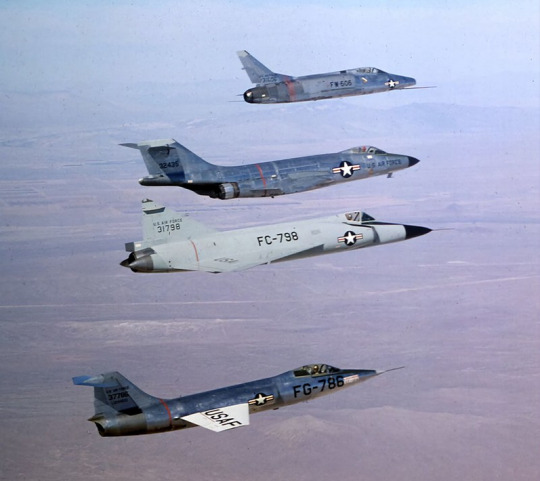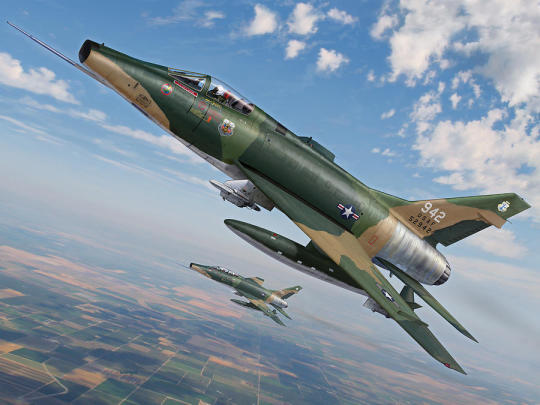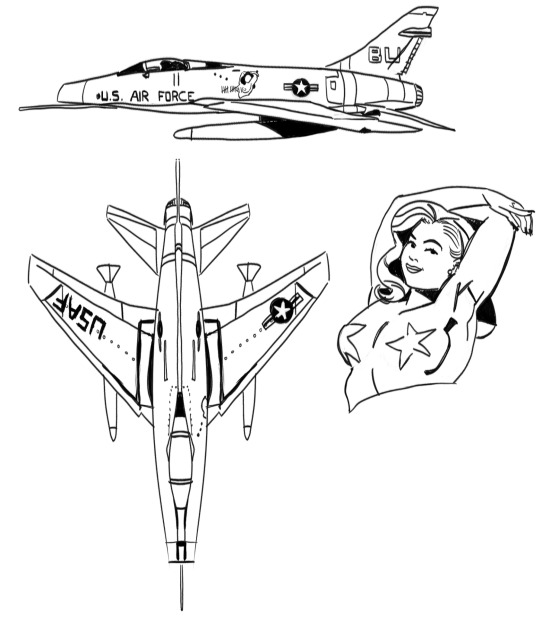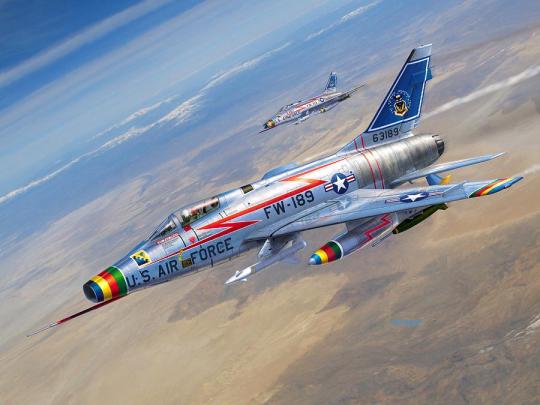#f 100 super sabre
Explore tagged Tumblr posts
Text

Knock knock Charlie it’s your Amazon order………
@AcePilotAV via X
#f100#f 100#f 100 super sabre#f 100c#north american aviation#fighter bomber#aircraft#usaf#aviation#vietnam war aircraft#cold war aircraft#fighter
22 notes
·
View notes
Text

Century Series Formation
Top to bottom:
North American F-100A-15-NA Super Sabre (s/n 53-1606) McDonnell F-101A-10-MC Voodoo (s/n 53-2435) Convair F-102A-15-CO Delta Dagger (s/n 53-1798) Lockheed XF-104A Starfighter (s/n 53-7786)
#Century Series#Aircraft#Cold War#USAF#F-100#Super Sabre#F-101#Voodoo#F-102#Delta Dagger#XF-104#Starfighter#jets#fighter#fighter bomber#interceptor
206 notes
·
View notes
Text

F-100D-25-NA Super Sabre At Tuy Hoa Air Base In Vietnam, 1968. ➤➤ VIDEO: https://youtu.be/pj08d2my5TI
➤➤HD IMAGE: https://dronescapes.video/F100
#f 100#Super Sabre#vietnam war#vietnam veteran#f 4 phantom ii#f 105#f 105 thunderchief#b 52stratofortress#Huey#aircraft#airplane#aviation#dronescapes#military#documentary#aviation history
87 notes
·
View notes
Text

The North American F-100 Super Sabre.
#north american aviation#north american f-100 super sabre#north american f-100#f-100 super sabre#super sabre#f-100#tactical air command#interceptors#jet fighters#phantom jet#air superiority fighters#tactical fighter#air combat command#u.s. military#usaf#u.s. air force#jet aircraft#military aircraft#vintage aircraft#united states air force
11 notes
·
View notes
Photo



#vietnam war#bombs#explosion#cold war#war#60's#60s#F-100 Super Sabres#my gif#gifs#my edit#gif#documentary
46 notes
·
View notes
Photo

(via Iowa's Bicentennial Warriors F-100 Super Sabres Digital Art by Stu Shepherd - Fine Art America)
30 notes
·
View notes
Text




The Thunderbirds are the USAF's stunt demonstration team. They are so cool; the stunts they do (flying upside down, flying in super tight formation, flying so super close to one another) are absolutely insane. You can't see in the pictures, but each aircraft is painted with the image of a thunderbird on its belly, which looks so cool up in the air.
The aircraft on top is a North American F-100D Super Sabre used by the Thunderbirds from 1964-1968. According to Wikipedia, the Thunderbirds used to use these aircraft to create sonic booms with the permission of the air show sponsor; this practice ended when the FAA banned supersonic flight over the continental United States. As per the NMUSAF website, "The F-100 was the world's first production airplane capable of flying faster than the speed of sound in level flight (760 mph)."
The aircraft underneath is a General Dynamics F-16A Fighting Falcon used by the Thunderbirds from 1982-1992. The Thunderbirds now use F-16Cs (plus two F-16Ds, which is the same as the C but with two seats instead of one).
Here's a video of the Thunderbirds performing at an air show in 2022; time stamps of note include 4:30, 6:15, 6:40, 7:46, 8:35, 9:20, 13:50, 17:40, 20:55. Or you can watch the entire video because the whole thing is super cool :D
If you ever get to see the Thunderbirds (or go to an air show) in person, remember to bring ear plugs. They are loud.
#original post#National Museum of the United States Air Force#United States Air Force Museum#aviation history#airplanes#Cold War#Thunderbirds#F-100#Super Sabre#F-16#Fighting Falcon#air shows
1 note
·
View note
Text




I've been asked what plane Hussein pilots and it's an F-100 Super Sabre! He calls her Buuma.
#was really fun to draw that girl again#that girl being Buuma#my art#hussein osman#simulator spring#art#comics
675 notes
·
View notes
Text
Forward Air Controller in a Cessna O-1 Bird Dog marking targets with White Phosphorous rockets for F-100 Super Sabres over South Vietnam in 1965
40 notes
·
View notes
Text

F-100 Super Sabre firing Hydra rockets
31 notes
·
View notes
Text

Hun-believably happy Hun over Djibouti, East Africa. Yes, that's a French F-100 Super Sabre. France was the first US ally to adopt the F-100 in 1958, acquiring 100 examples. The type saw extensive action in Algeria and Djibouti and remained in French service until 1978.
@RealAirPower1 via X
#f 100 super sabre#north american aviation#fighter bomber#aircraft#french air force#aviation#cold war aircraft
24 notes
·
View notes
Text

North American F-100 Super Sabre, Fighter, built by North American, in 1954, for the United States
23 notes
·
View notes
Video
Lockheed YF-104A Starfighter by Benjamin Donnelly Via Flickr: The fourth of the 1950s era “Century Series,” the F-104 Starfighter was designed around one single element: speed. Clarence “Kelly” Johnson, head of Lockheed’s famous “Skunk Works” factory, had interviewed US Air Force pilots during the Korean War, seeking their input on any new fighter. Since the pilots reported that they wanted high performance more than anything else, Johnson returned to the United States determined to deliver exactly that: a simple, point-defense interceptor marrying the lightest airframe to the most powerful engine then available, the superb General Electric J79. When Johnson offered the L-098 design to the USAF in 1952, the service was so impressed that they created an entire competition for the aircraft to be accepted, ostensibly as a F-100 Super Sabre replacement. The Lockheed design had the clear edge, though both North American’s and Northrop’s design went on to be built themselves—the North American F-107A Ultra Sabre and the Northrop T-38 Talon. The USAF purchased the L-098 as the F-104A Starfighter. The design changed very little from initial design to prototype to operational aircraft, which was done in the astonishing time of two years. When the first F-104As reached the USAF in 1958, pilots quickly found that it was indeed a hot fighter—too hot. The Starfighter’s design philosophy of speed above all else resulted in an aircraft with a long fuselage, T-tail for stability, and small wings, which were so thin that special guards had to be put on the leading edges to avoid injuring ground personnel. Because of its small wing, the F-104 required a lot of runway, and blown flaps (which vents airflow from the engine over the flaps to increase lift) were a necessity; unfortunately, the airflow system often failed, which meant that the F-104 pilot would be coming in at a dangerous rate of speed. Because it was feared that a pilot who ejected from a F-104 would never clear the tail, a downward-ejection seat was fitted, but after killing over 20 pilots, the seat was retrofitted with a more reliable, upward-firing type. The design also was not very maneuverable in the horizontal, though it was difficult to match in the vertical. Its shape earned it the moniker “Missile With a Man In It” and “Zipper.” One thing pilots did not complain about was its speed—the listed top speed of the F-104 was Mach 2.2, but this was because above that the fuselage would melt. The J79 was a near flawless engine that gave the Starfighter an excellent thrust-to-weight ratio; uniquely, the intake design of the Starfighter gave the engine a bansheelike wail. So superb was the F-104 at level speed and climbing that NASA leased several as trainers for the X-15 program, and in setting a number of speed and time-to-climb records. If the F-104 had gotten a mixed reception at best in the USAF, Lockheed felt that it had potential as an export aircraft. Beating out several excellent British and other American designs in a 1961 competition, every NATO nation except France and Great Britain bought F-104s and manufactured their own as the F-104G; Japan also license-built Starfighters as F-104Js, while still more were supplied to Pakistan and Taiwan. Just as in USAF service, accident rates were incredibly high, particularly in West German and Canadian service—Germany lost 30 percent of its initial batch, and the Canadians over half. Worries that the F-104 was too “hot” for pilots usually transitioning from the F-86 were ignored, and later it was learned why: German, Dutch, and Japanese politicians later admitted to being bribed by Lockheed into buying the Starfighter. Its high accident rate earned such nicknames as “Widowmaker,” “Flying Coffin,” and “Ground Nail.” Pakistani pilots simply called it Badmash (“Criminal”) and the Japanese Eiko (“Glory,” inferring that it was the easiest way to reach it). German pilots joked that the quickest way to obtain a F-104 was to buy a patch of land and wait. Nonetheless, once pilots learned how to tame the beast, the accident rates eased somewhat, and NATO pilots discovered that the Starfighter excelled as a low-level attack aircraft: fitted with bomb racks, the F-104 was remarkably stable at low altitude and high speed, and Luftwaffe pilots in particular found that they could sneak up on a target, launch a simulated attack, and be gone before ground defenses could react. The Italians in particular loved the F-104, building their own as the F-104S: these aircraft were equipped with multimode radar and armed with AIM-7 Sparrow and Aspide radar-guided missiles, making them a superb interceptor. Though most NATO nations reequipped their F-104 units with F-16s, F-18s, or Tornados beginning in 1980, the Italian F-104S fleet was continually upgraded and soldiered on until final retirement in 2004. 2578 F-104s were built, mostly F-104Gs; today over 150 survive in museums, with at least ten flyable examples, making it one of the best preserved of the Century Series. The second oldest F-104 left (only the YF-104A in the National Air and Space Museum is older), 55-2967 was delivered to the USAF as one of 17 YF-104 pre-production aircraft--and one of only two left, as the others were either expended as drones or crashed during testing. 55-2967 never served in a frontline or ANG unit: it went directly to Air Force Systems Command at Edwards AFB, California, in 1956. It only flew for a year before it was heavily damaged in a bad landing at Bergstrom AFB, Texas. 55-2967 would never fly again, but rather than scrap it, it was turned into a GF-104A ground instruction trainer. Ironically, the hard landing that grounded 55-2967 saved it from the fate of the other YF-104s, and in the late 1960s, as the F-104 was phased out of USAF service, it was put on display on the cadet grounds at the US Air Force Academy in Colorado Springs. However, the airframe suffered from being out in the open, and the AFA wanted to replace it with something of a little newer vintage. It was then donated to the Pueblo Weisbrod Museum, and trucked down to its new home. It was restored and moved inside in 2011. When I got the picture, I didn't realize this was either a YF-104 or that I'd almost certainly seen it as a kid when Dad and I visited the AFA on several occasions. Though few if any USAF F-104s flew in overall ADC Gray, this better preserves the aircraft; the font is also incorrect, but that's a nitpick on an excellent preservation job. A Tactical Air Command patch is carried on the tail. I always love being reacquainted with aircraft I would've seen when I was little!
#Lockheed#F-104#YF-104A#EdwardsAFB#USAF#ColdWar#testaircraft#prototype#fighter#aircraft#PuebloWeisbrodMuseum#flickr
15 notes
·
View notes
Photo

(via F-100D Sharpening the Sabre Digital Art by Stu Shepherd - Fine Art America)
38 notes
·
View notes
Note
What do you think of the F-100 Super Sabre? (It was the first supersonic aircraft created)



that is one of the aircrafts of all time
10 notes
·
View notes
